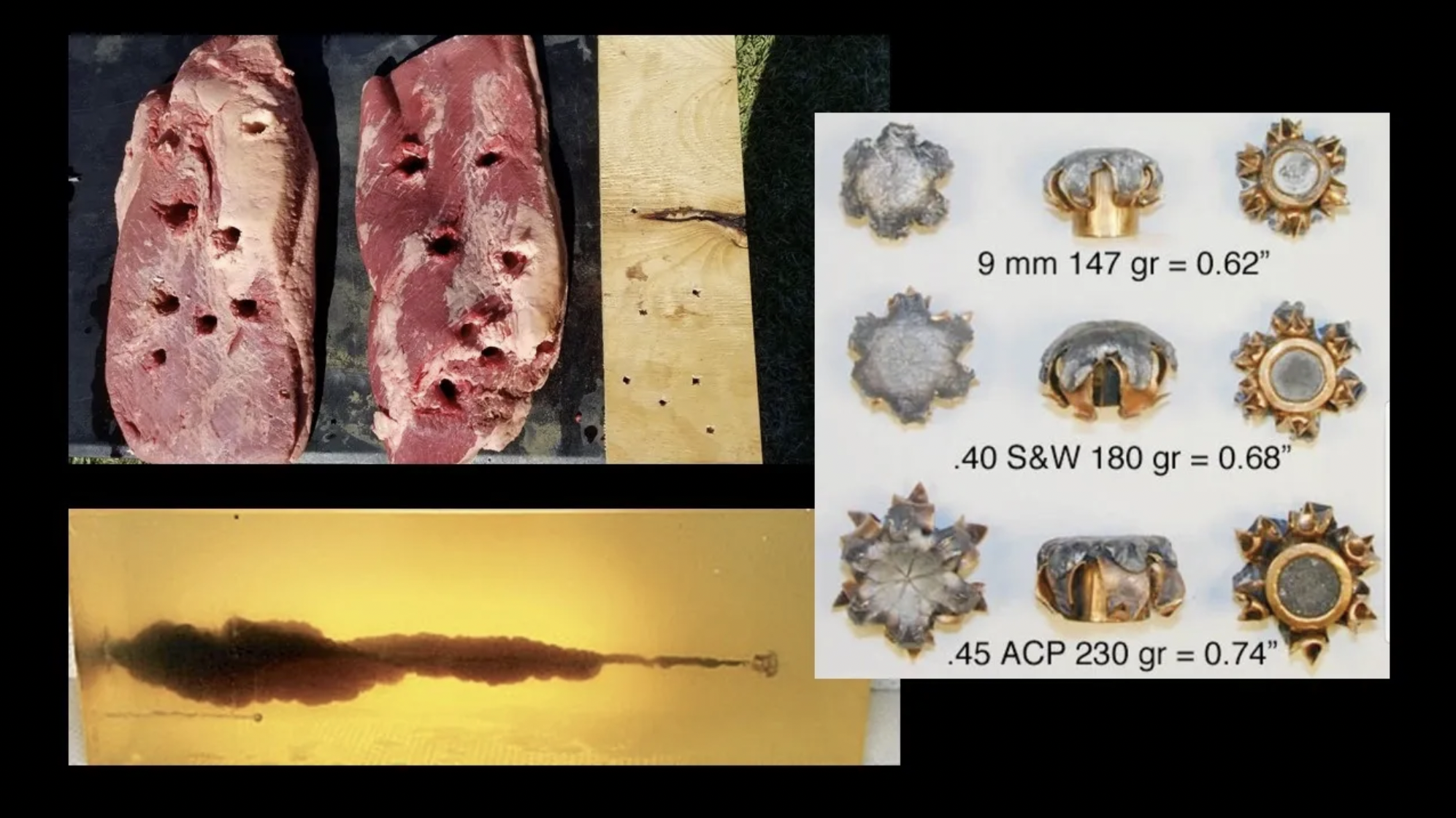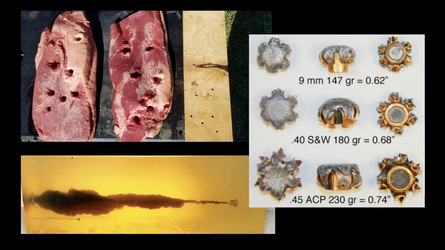Over-Penetration Fact and Fiction
Posted by Kyle Holmes on 6th Jul 2021

Penetration is the overall depth measured from round entry to the stopping point of the round. This is measured in two ways.
1. Testing using International Wound Ballistics Association (IWBA) calibrated gelatin and according to federal standards having 4 layers of heavy denim in front of the gel. (FBI phase 1, our phase 2)
2. From forensic research on actual human targets post shooting. This is inconsistent because of shot placement, clothing and bones acting as barriers and so many factors that are not controlled.
IWBA gel does not and isn’t supposed to replicate human properties or density due to the following reasons:
– Gel is a non-compressible liquid, while human tissue is compressible.
– Ballistic results in gel in regards to penetration do not mimic real life forensic results.
– During IWBA gel calibration a BB must penetrate three inches of gel, plus or minus a half inch, yet a BB will not penetrate human skin. The resistance of the two media is completely different.
– Gel is used because it’s consistent, holds the effects after the shot and is clear so it shows the results without requiring cutting of the media. Gel is great for comparative purposes not for determining real-world results.
OVER-PENETRATION FACTS
1. 55% of all shots don’t hit the target. Worrying about the effects of those rounds that miss is of higher concern.
2. No shot has passed thru the center of mass of a human target and then resulted in a law suit or a death of a separate individual. Rounds that have done that have not passed thru the desired target area.
3. Federal standards require a minimum of 12-inch penetration into the gel to even continue the testing of that round. Federal agencies desire 15-20 inches of overall penetration. That figure is derived from witnessing which rounds penetrate properly in human forensic reports and then witnessing what those rounds do in gel testing.
4. No defensive Frangible, Solid Copper or non-malfunctioning Hollow Point rounds penetrate past 20 inches in IWBA gel.
5. Full Metal Jacket (FMJ) rounds in all calibers pass greater than 30 inches in IWBA gel. Simply carrying non FMJ will eliminate the over-penetration problem (if your agency allows).
6. No Frangible rounds penetrate the minimum required 12 inches, actually averaging less than 9 inches. Most only create superficial wounding on human targets. All are considered under penetrators. These rounds may be great in apartments or the like, but are typically not considered duty ammunition.
7. Hollow Points penetrate between 9 and 16 inches. In any specific caliber, weight is the number one determinant in penetration depth. Generally speaking, more weight equals more penetration. Increased Velocity does not increase penetration depth. Hollow Points that fail (fail to open, fragment, tumble) normally do not fall within the 9-16 inch average. Depending on caliber the failure rate for a Hollow Point is between 25-40%. Lack of reliability and consistency of even the highest quality HP leads to under/over penetration often.
8. Solid Copper rounds penetrate between 16-20 inches in IWBA gel. Solid Copper rounds have the highest reliability and consistency of any of the 4 bullet types tested which are equal to Frangible rounds and FMJ in non-barrier testing and better than Frangible rounds and FMJ in lite domestic barrier testing. (FBI phase 2 and 3. Our phase 3 and 5)
– Lite domestic barriers include dry wall, plywood and bone.
– Heavy domestic barriers include solid wood, car doors and auto glass. (FBI phase 4)
– Armor barriers are IAW NIJ standards
So, is Over-Penetration real? Yes. but of minor concern and can be easily mitigated.

